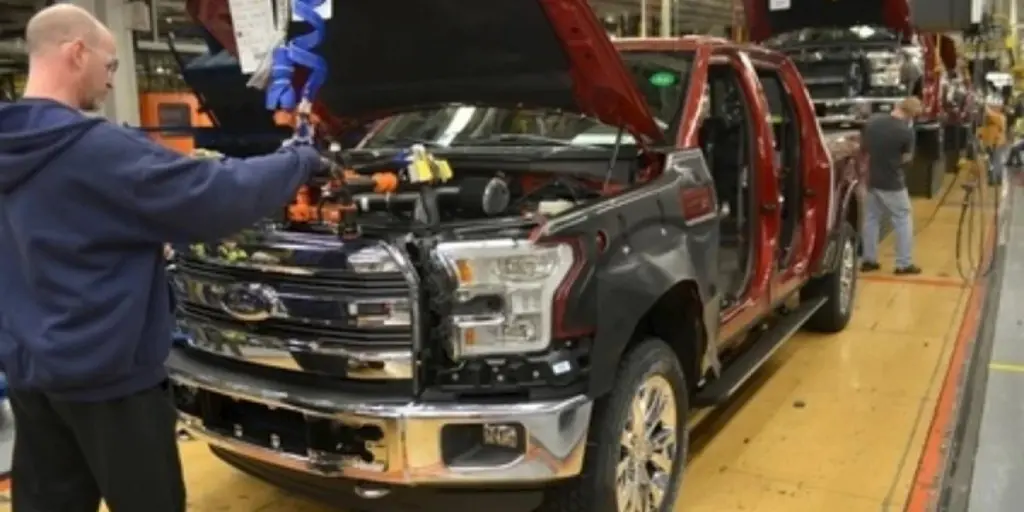As the auto industry eyes the transition to a much more electrified future, it is becoming increasingly clear that supply chains will have to change from current set-ups. This process of change will take a number of forms all along the automotive value chain, from the extraction of necessary raw materials for batteries, to the manufacturing of EV components, the activities and structure of established automotive suppliers and the level of vertical integration of the vehicle manufacturers (OEMs) themselves. In the automotive industry’s elongated and complex supply chain – and one notorious for its lack of transparency – it is going to be a big challenge for all participants.
At the OEM level, vehicle makers are taking significant steps to prepare for much bigger powertrain battery needs. Major investments in manufacturing capacity are being planned, sometimes strategically positioned with partners and sometimes kept in-house. As ever, there is a judgement call on the trade-off between sharing cost and intellectual property with a synergistic partner and keeping more control of future operations in-house. The power relationships and problematic supply chain pinch-points of the future have yet to be determined – but they will be substantially formed over the next five years. No time to waste.
As ever, there is a judgement call on the trade-off between sharing cost and intellectual property with a synergistic partner and keeping more control of future operations in-house.
A number of interesting case studies in the scramble for battery capacity stand out. Ford, for example, is working with SK On on a ‘mega campus’ called BlueOval City in the US that will have the capacity to make a new electric truck (dubbed ‘T3’ – short for Trust The Truck) at 500,000 units a year. The two key things to note here are that it’s an all- new facility rather than an adapted existing one and that Ford is working closely with SK On. A fully integrated BlueOval SK manufacturing site will build battery cells and arrays and assemble packs that will be delivered just across the site into the assembly plant, in less than 30 minutes.
BlueOval City is also developing an on-site supplier park and will have an upfit centre capable of adding dozens of features including robotically installed spray in bedliners and integrated tool boxes before the pickups are shipped to dealers.
Similarly, General Motors and Samsung SDI recently announced they plan to invest more than $3 billion to build a new battery cell manufacturing plant in the US that is targeted to begin operations in 2026.
“GM’s supply chain strategy for EVs is focused on scalability, resiliency, sustainability and cost-competitiveness. Our new relationship with Samsung SDI will help us achieve all these objectives,” said GM Chair and CEO Mary Barra. “The cells we will build together will help us scale our EV capacity in North America well beyond one million units annually.”
Another example. Leading Japanese companies GS Yuasa and Honda, and Blue Energy, a joint venture between the two companies, have announced that their plans for research, development and investment in mass production of lithium-ion batteries, primarily for BEVs (battery electric vehicles). The plans for 2027 start of production have now been approved by the Japanese Government.
Volkswagen Group is also investing for its global footprint in battery cells. Volkswagen and its dedicated battery unit PowerCo SE will build their largest cell factory to date in Canada, with production planned to start in 2027. Since its launch in July 2022, PowerCo SE has decided on the location of three cell factories in Salzgitter, Valencia and St. Thomas in North America. By 2030, VW aimes for PowerCo and partners to generate annual revenue of over 20 billion euros.
Volkswagen set up PowerCo SE in Germany as a separate battery company, bundling the group’s global battery business across the entire value chain – from raw material supply and development to the construction and operation of gigafactories.
The ambitious goal of Volkswagen is to have 80% of its vehicles electric by 2030.
Previously, the company formed a joint venture with Umicore in December 2021, to gain access to Umicore’s battery technology, which was the company’s major step in achieving its goal. And the current investment in the Canadian plant is the next step towards the greater vertical integration of its supply chain. These strategic investments will help Volkswagen further strengthen its battery production capabilities and cost management.
Lucy Tripathi, Automotive Senior Analyst at GlobalData, says the sudden rise in acceptance of electrified vehicles and the scale of the transition ahead has been compelling major automakers to align their future strategic plans with this trend.
She points out: “According to GlobalData estimates, 19.4 million units of electrified vehicles were sold in 2022 globally, recording an annual growth rate of 40.2%. The sales are estimated to increase to 43.8 million units by 2026, registering a compound annual growth rate (CAGR) of 26% over 2021-2026. The global batteries market saw sales of 94.9 million units in 2022 and is expected to witness sales of 119.9 million units by 2026, registering a CAGR of 7.4%. In 2021, Toyota Group and Volkswagen were the leading electrified vehicle manufacturer companies with a market share of 10.7% and 9.5%, respectively, in the global electrified vehicle market.”
Once fully operational, the Ontario gigafactory – with an estimated annual production capacity of 90 Gwh – will boost the company’s future plans.
Tripathi goes further: “With its extensive technology, innovation, and industrial know-how, Volkswagen will not only retain its dominant position in the rapidly changing car market but also challenge the world leader Toyota Group.”
It’s all to play for in what is going to become a highly dynamic competitive landscape in an automotive value chain that will look very different from today’s by 2030.
Source from Just-auto.com
Disclaimer: The information set forth above is provided by Just-auto.com independently of Alibaba.com. Alibaba.com makes no representation and warranties as to the quality and reliability of the seller and products.




